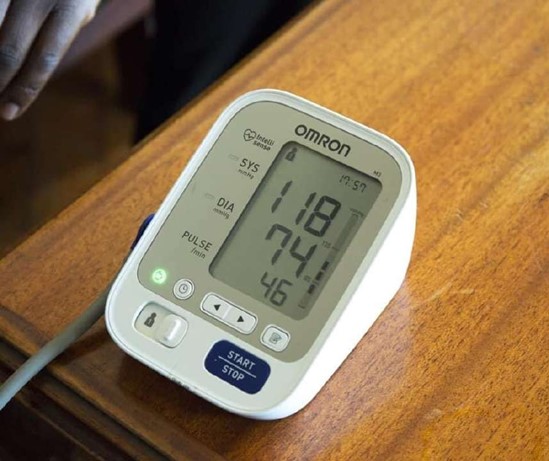A nurse in a provider's office is assessing the vital signs of a 2-year-old child at a well-child visit.
Which of the following findings should the nurse report to the provider?
Blood pressure 118/74 mm Hg.
Respiratory rate 26/min.
Pulse rate 98/min.
Temperature 37.2° C (99° F).
The Correct Answer is A

According to the normal pediatric vital signs chart provided by Cleveland Clinic, the normal blood pressure range for a 2-year-old child should be between 90- 105/55-70 mm Hg. The blood pressure of 118/74 mm Hg is higher than the normal range for a 2- year-old child and should be reported to the provider.
Choice B is wrong because a respiratory rate of 26/min falls within the normal range of 20-30 breaths per minute for a child between ages 1 and.
Choice C is wrong because a pulse rate of 98/min falls within the normal range of 80-125 beats per minute for a child between ages 1 and.
Choice D is wrong because a temperature of 37.2° C (99° F) falls within the normal range for children which is around 98.6 degrees.
Nursing Test Bank
Naxlex Comprehensive Predictor Exams
Related Questions
Correct Answer is C
Explanation
The nurse should first check the pH of the gastric secretions to confirm the placement of the NG tube before administering the enteral feeding.
Choice A is wrong because flushing the tube with water should be done after confirming the placement of the NG tube.
Choice B is wrong because attaching the feeding bag tubing to the end of the NG tube should be done after confirming the placement of the NG tube.
Choice D is wrong because setting the administration rate on the feeding pump should be done after confirming the placement of the NG tube.
Correct Answer is ["A","B","D"]
Explanation

A. Offer the infant a pacifier during feedings.
B. Check for residual volumes by aspirating stomach contents.
D. Instill the formula over a period of 30 to 45 min.
Offering the infant a pacifier during feedings can help promote non-nutritive sucking and provide comfort to the infant.
Checking for residual volumes by aspirating stomach contents can help monitor gastric emptying and tolerance to enteral feeding.
Instilling the formula over a period of 30 to 45 min can help prevent overfeeding and reduce the risk of aspiration.
Choice C is wrong because placing the infant in a supine position during feedings increases the risk of aspiration.
The infant should be placed in an upright or semi-upright position during feedings.
Choice E is wrong because heating the formula to 39° C (102° F) prior to administration is not necessary and may even be harmful if the formula is overheated.
Whether you are a student looking to ace your exams or a practicing nurse seeking to enhance your expertise , our nursing education contents will empower you with the confidence and competence to make a difference in the lives of patients and become a respected leader in the healthcare field.
Visit Naxlex, invest in your future and unlock endless possibilities with our unparalleled nursing education contents today
Report Wrong Answer on the Current Question
Do you disagree with the answer? If yes, what is your expected answer? Explain.
Kindly be descriptive with the issue you are facing.
